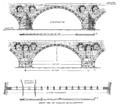Theodor Wiegand facts for kids
Theodor Wiegand was a famous German archaeologist. He was born in Bendorf, Germany, on October 30, 1864. He spent his life discovering ancient cities and helping to build museums. He passed away in Berlin on December 19, 1936.
Early Life and Education
Theodor Wiegand studied at several universities in Germany. These included the University of Munich, University of Berlin, and University of Freiburg. He became very interested in ancient history and archaeology during his studies.
Amazing Discoveries
Wiegand started his archaeological work in 1894. One of his first big projects was at the Athenian Acropolis in Greece. He worked with another famous archaeologist named Wilhelm Dörpfeld.
From 1895 to 1899, Wiegand led important digs at the ancient Greek city of Priene. After that, from 1899 to 1911, he worked at Miletus, another ancient city.
He also helped with excavations at the sanctuary of Didyma between 1905 and 1911. Then, from 1910 to 1911, he worked on the island of Samos.
Later, in 1927, Wiegand made a big discovery in Pergamon. He found the arsenals, which were storage places for weapons, at the castle on the acropolis. He also excavated a large sanctuary dedicated to Asklepios outside the city. Wiegand also finished excavations at Baalbek in Lebanon and shared his findings.
Working with Museums
From 1899 to 1911, Theodor Wiegand worked for the museums in Berlin. He was a foreign director in Constantinople, which was the capital of the Ottoman Empire. He also worked as a science attaché for the German Embassy there.
From 1912 to 1930, he became the director of the Department of Antiquities in the Berlin museums. During this time, the famous Pergamon Museum was built. This museum was created to display ancient architecture and artifacts. Theodor Wiegand's work helped bring many ancient treasures to light for everyone to see.
Images for kids
-
The late Roman Makestos Bridge, discovered and drawn by Wiegand during one of his many exploration tours in Asia Minor.
See also
 In Spanish: Theodor Wiegand para niños
In Spanish: Theodor Wiegand para niños



